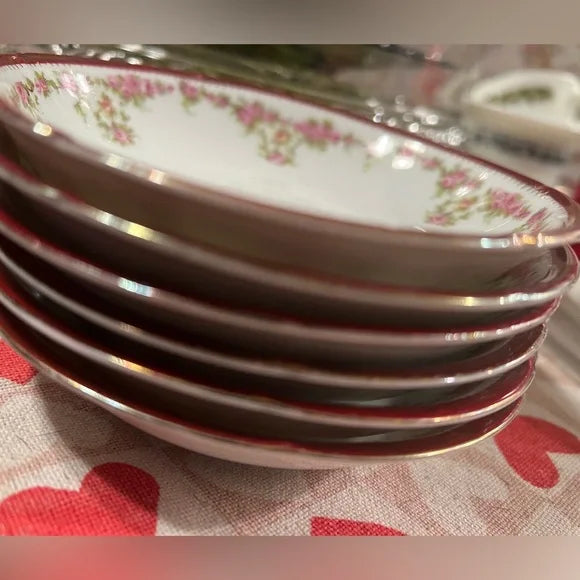Imperial PSL Austria Porcelain: Collector’s Guide

Imperial PSL Austria porcelain, made by the Pfeiffer & Löwenstein factory in Bohemia, is more than fine china: it’s a story captured in hand-painted forms. For collectors of European porcelain, its pieces like these that offer a peek into 19th-century artistry, showcasing intricate designs, gilded accents, and timeless elegance. So, how do you spot them?
A Glimpse into History
The Pfeiffer & Löwenstein factory was established in the mid-19th century in Schlackenwerth (present-day Ostrov, Czech Republic). From the beginning, their goal was to produce porcelain that could compete internationally, which is why many pieces bear the “Imperial Austria” mark—especially those exported to the American market. Over time, the factory earned a reputation for hand-painted pieces that proudly displayed floral patterns, romantic landscapes, and scenic motifs.
Keep An Eye Out for These Features
- Each piece tells its own story through a variety of hand-painted designs like delicate blossoms, sweeping landscapes, and romantic scenes.
- Touches of gold gilding on rims, handles, and other decorative elements are known to add a sense of sophistication.
- The thin porcelain speaks to the skill of the artisans, showcasing craftsmanship in the smallest of details.
- Signature colors such as deep blues, greens, soft pinks, and gold highlights give each piece its rich and timeless beauty.
How to Identify Authenticity
Look for:
- PSL Marks are typically found on the underside and will always represent the Pfeiffer & Löwenstein factory. Just make sure to study the design of authentic logos and brands. This can help in spotting a really good fake.
- Imperial Austria Labels will help identify export-quality porcelain that was made for international markets.
- Painter’s Numbers or Initials aren't always included, but their presence can help confirm authenticity and age.

Types of Pieces
Imperial PSL Austria porcelain includes a range of items:
- Decorative plates and chargers
- Vases and urns
- Teacups, saucers, and coffee sets
- Figurines and specialty collectibles
Condition and Value
The beauty of PSL porcelain lies in its delicate nature, making the condition an important part of any piece. Chips, cracks, or repairs can affect value, while hand-painted pieces in perfect condition are more sought after, but you'll also find that rare designs or limited-production items can also fetch higher prices. Even still, remember that the value of a piece can vary, so it is always helpful to check auction records, consult with antique dealers, and explore porcelain price guides.
Collector Tips
-
- Verify Marks: Always check for PSL and Imperial Austria stamps before buying.
- Research Patterns: It's important to understand what you're looking at. Studying floral, scenic, and gilt designs can help when you're looking to identify rare pieces.
- Handle with Care: Thin porcelain is fragile, so gentle handling and proper storage are always important when it comes to preserving your pieces.
Where to Find Imperial PSL Austria Porcelain
- Antique Shops & Estate Sales are a great place to find rare, hand-painted treasures.
- Online Marketplaces like Etsy, eBay, and other dealers can connect you with unique finds.
- Collectors' shows, such as European porcelain fairs and antique conventions, can offer curated selections.
-
Our Catalogue: Browse our catalogue to see if we currently have Imperial PSL items available.
Don't forget to follow on Instagram for updates on new items, blog posts, and more!



